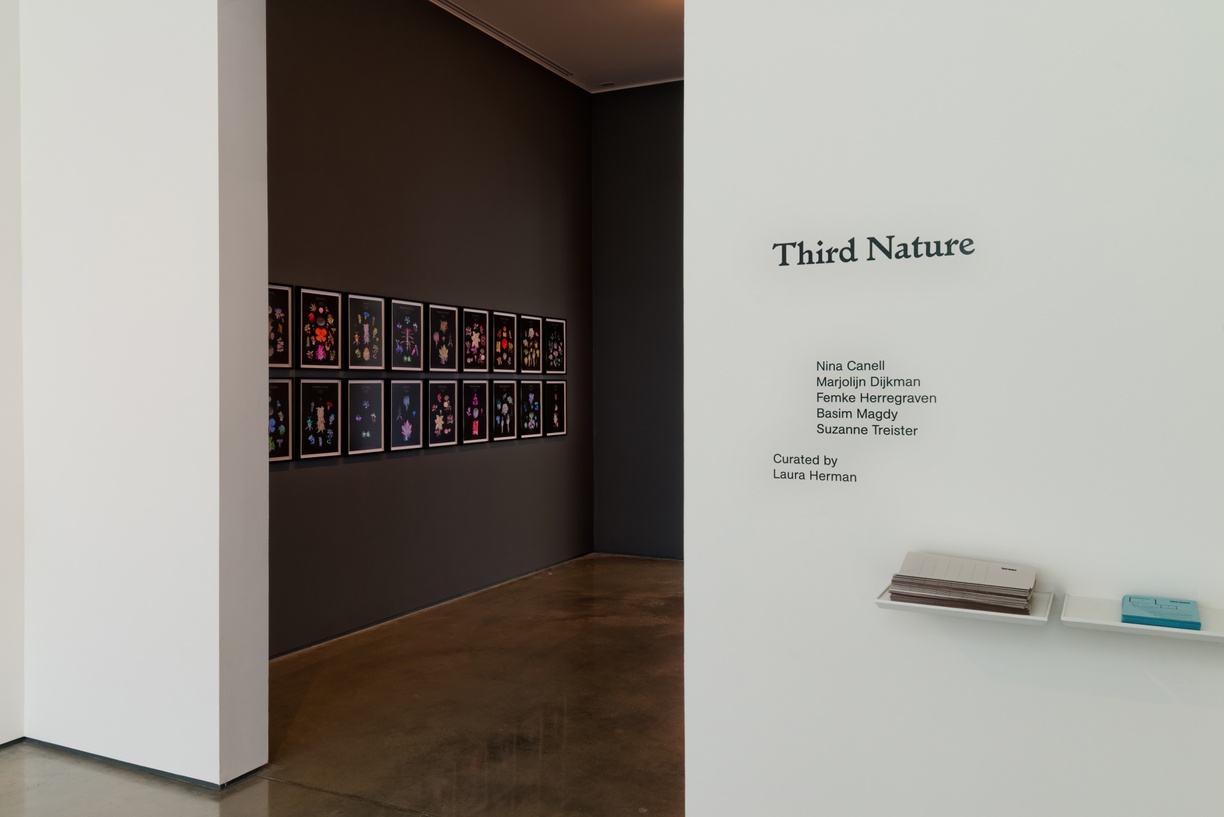
- Laura Herman
Artists: Nina Canell, Marjolijn Dijkman, Femke Herregraven, Basim Magdy, and Suzanne Treister
How is information carried along? Where does it begin and where does it end? Some like to imagine an infrastructure that calculates and passes numbers and vowels smoothly along, speaking for us, as for the messy, earthy order of things. Put negatively, some eschew thinking about how infrastructure accretes, energy flees, and speech interrupts. Third Nature upends familiar plot lines endemic to current obsessions with immaterial flows and speculative projections, instead privileging other logics and syntaxes to chronicle the constant morphing of matter and energy into structures of power. If the fictions surrounding global infrastructure tend to hover in liquid and gaseous language, how can we shift the plot back to the stuff that evolves, guides, and contains?
The exhibition’s title hinges on the phrase “third nature,” coined by the theorist McKenzie Wark in reference to the information and communication infrastructures that, overlaying and commanding the old manufacturing and distribution ones, newly organize life. Here is a system that unfolds notions of substance in a teleological endgame; a unidirectional denouement toward which dematerialization leads the action. Rather than represent what reads like a flowchart the artists in the exhibition—Nina Canell, Marjolijn Dijkman, Femke Herregraven, Basim Magdy, and Suzanne Treister—, each question how human transactions and the “natural world” mutually inform and repel each other. In doing so, they craft a more complicated understanding of “third nature” as an entangled space where modern divides between the organic, the cultural, and the technical are obfuscated.
Straddling science-fiction and psychedelia, and employing humorous and poetic tropes, the works in this exhibition dwell on the chemistry of image production, the hallucinogens of finance, the volcanic ruptures that render volatile transactions inert, the technological upgrades on human interaction, and the electricity that carries our speech with the potential to cut out mid-sentence. Stepping into fictional landscapes via divination, imagination, or simulation, we might occasionally wonder: Does a word need to be spoken before realizing how our lives are already tethered to all types of conductive relations?



